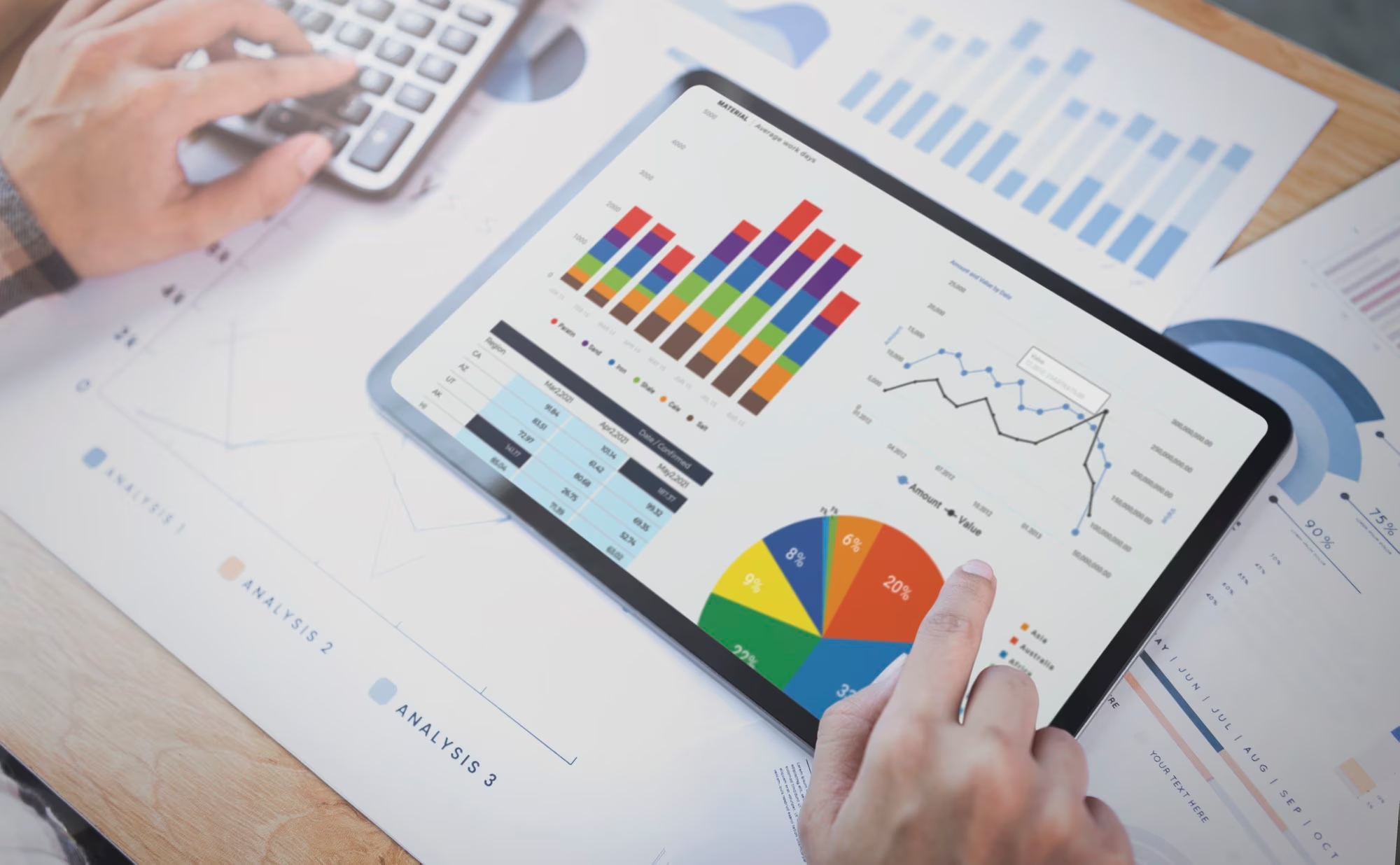 SHARE
SHARE
Understanding Sales Data: How to Optimize, Functions, How to Read, Analyze, and Examples
Briantama Afiq Ashari
Have you ever felt like your business is running well, but profits are still stagnant? It could be that you haven't utilized your sales data optimally!
So, sales data has an important role in developing a business, especially in determining the right strategy. Unfortunately, many business owners do not understand this sales data.
Sometimes, they are still confused about how to optimize sales data so that their business makes more profit.
Therefore, let's look at the following understanding and effective strategies for sales data!
What is Sales Data?
Source: Freepik
Before getting into the trick, we must first understand what sales data is. In short, sales data is a collection of information about transactions in a business, including the number of products sold, revenue generated, and customer purchasing trends.
From this data, you can see sales patterns, find out which products are most popular, and make more strategic decisions for your business.
In addition, sales data consists of 4 main components, namely:
1. Sales Volume
So, the first component of this sales data shows how many products were sold in a certain period. You can identify certain times when transactions increase or decrease.
2. Number of Sales
Next, total sales is the total value of all products or services successfully sold. So, by monitoring this metric, you can assess business growth over time.
3. Sales Profits
Next, sales profit is calculated from the difference between income received and product production or acquisition costs.
This metric helps businesses find cost efficiency strategies, so that profits are maximized.
4. Market Share (Market Share)
Lastly, market share measures how big a share of the market is controlled by your business compared to competitors.
If market share is low, it could be that you need to improve your marketing strategy and product innovation.
Each of these components helps business owners understand the condition of their business more thoroughly.
Now, how do you optimize sales data so that your business makes more profit? Here are five tricks you can apply!
Read Also: Understand Rent Expense (Rent Costs): Taxes, and Savings Strategies for Business
5 Ways to Optimize Sales Data
In the business world, making data-driven decisions is the key to success. One of the most valuable data sources is sales data.
By analyzing customer purchasing patterns, market trends, and the effectiveness of promotional strategies, you can increase profits and manage your business more efficiently.
Here are 5 ways to optimize and leverage sales data to help your business grow!
1. Use Sales Data to Analyze Market Trends
Sales data can provide insight into market trends and customer behavior.
Try to pay attention to products that are frequently purchased, when sales spikes occur, and which categories are less popular.
From there, you can develop a more effective marketing strategy. For example, if you have a culinary business and see that orders increase during lunch time, you can offer special promotions at that time.
2. Optimize Stock Based on Sales Data
One of the biggest challenges in business is managing stock. Too much stock can cause losses, while too little stock can make customers disappointed.
So, with sales data, you can see demand patterns and manage inventory more efficiently.
For example, if a product always sells well every weekend, then you can add special stock on those days.
On the other hand, if there are products that are rarely sold, maybe it's time to consider promotions or discounts so they sell more quickly.
This strategy has proven to be effective, you know!
3. Personalize Promotions Based on Sales Data
You must often see promos that feel very relevant to your needs, right? That's because many businesses already use sales data to tailor promotions to customer habits.
For example, if customers often buy coffee and pastries in the morning, you can offer a bundling package at a special price.
So, through this strategy, customers feel more appreciated, you know.
4. Evaluation of Sales Team Performance
Not only about products and customers, sales data can also be used to evaluate the performance of the sales team.
From this data, you can see who has succeeded in achieving the target and how to improve their performance.
If there is a team whose sales continue to decline, there may be problems that need to be addressed immediately.
In essence, through data-based evaluation, you can take more accurate improvement steps.
5. Use Technology to Manage Sales Data
Another important strategy is to utilize technology. Managing manual sales data can be a real hassle.
There are many risks, such as human error, missing data, or inaccurate analysis. Well, the solution is to use a digital system.
Read Also: Understanding Vendors as Key Partners: 10 Tips on How to Choose the Right Restaurant Vendor
6 Sales Data Functions
Now you know what sales data is and how to optimize it. However, what are the main functions of this data? These are the 6 main functions of sales data that you must understand!
1. Helps Make More Accurate Decisions
Without clear data, all business decisions are only based on estimates, aka feelings.
In fact, in the business world, decisions that are not based on data can have big risks.
So, with accurate sales data, you can see customer trends, the best-selling products, and the best time period to sell.
For example, if data shows that sales increase on weekends, you can increase stock or offer special promotions on those days.
2. Evaluate Sales Strategy
Have you ever implemented a marketing strategy, but the results were less than optimal?
This is where the role of sales data is very important. Through historical data, you can evaluate whether the promotional strategy you are implementing is successful or not.
For example, if after a big discount sales increase, it means the strategy is effective.
However, if after increasing the price there are actually fewer customers, maybe you need to adjust the price again.
3. Determining Productivity Targets
Every business wants to continue to grow, however, without clear data, how can you target growth? So, by using sales data, you can set realistic productivity targets.
You can see growth trends from month to month and determine sales targets for the next period. If the target is not achieved, then there is something that needs to be evaluated.
4. As Proof of Accountability
Function sales data can also be concrete evidence when you have to account for business reports. For example, if you have investors or shareholders, they will want to know how your business is performing.
5. Identifying the Most Popular Products
You may sell many products, but do all products provide the same benefits? So, from the sales data function, you can see which products are most popular with customers. Of course, this helps you determine business strategies, such as:
- Increase stock of best-selling products
- Running promotions for products that are less popular
- Remove unprofitable products
6. Complete Business Database
Lastly, sales data functions can be a very valuable part of a business database. All of this can be used to develop a more personalized and effective marketing strategy.
How to Read and Analyze Sales Data
These are some of the functions of sales data that you should know! Oh yeah, you also have to know how to analyze data so you can make the right decisions. Here are the steps you can take:
1. Organize your data
Before starting to analyze, make sure the sales data you have is neatly arranged. Unstructured data can cause errors in calculations and decision making.
2. Make sure the data is complete
Good sales data should include several important elements such as:
- Transaction date
- Number of products sold
- Selling price per product
- Total income
- Customer identity (if any)
The more complete the data you have, the more accurate the analysis can be.
3. Observe Sales Patterns
See trends emerging from sales data. Are there certain periods where sales increase? Are there any products that always sell well every month? This observation is very important, you know! So, don't take it lightly, OK!
4. Evaluate the Performance of Each Product
Not all products provide the same benefits. Use data to see which products are purchased most and which ones are less popular. If a product doesn't sell, try to analyze the cause:
- Is the price too expensive?
- Are there competitors offering better products?
- Is the promotion less attractive?
5. Determine the Analysis Time Period
After that, you can determine the time range you want to analyze. You can choose:
- Daily → To view sales per day
- Weekly → For trend analysis within one week
- Monthly → To find out business performance more broadly
- Annual → To evaluate business growth in a full year
For example, if you want to see the impact of a promotion, analyze sales data before and after the promotion.
Example of Sales Data
To make it clearer, here are some examples of sales data that are usually used in business:
1️. Per Transaction Report
This report records each transaction in detail, for example:
Source: Google
From this data, you can see which products are the best sellers and the total number of sales per day.
2️. Time Based Sales Report
This type of report displays sales in a certain period, for example:
Source: Google
This data helps you see business growth from month to month.
3️. Sales Reports Per Product
This report shows which products sold the most in a certain period, for example:
Source: Google
From here, you can see that Ayam Geprek is the best-selling product and contributes 40% of the total business revenue.
Conclusion
Optimizing sales data is no longer an option, but a necessity if you want your business to grow.
So, of course you have to understand the meaning, functions and strategies that have been explained, so that your business can make more money!
Don't let sales data just become numbers that are not utilized. It's time to switch to more modern solutions with ESB POSLite or ESB POS.
Come on, increase business efficiency and make customers more satisfied! Try it now and feel the difference!
 SHARE
SHARE




